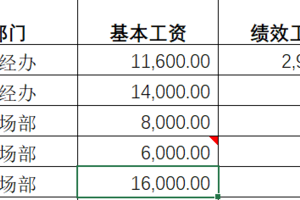Django框架的使用教程路由请求响应的方法
作者:Gaidy 时间:2022-02-08 19:04:55
路由
路由可以定义在工程的目录下(看你的需求),也可以定义在各个应用中来保存应用的路由,用主路文件urls中使用include()包含各个应用的子路由的数据
路由的解析顺序
Django接收到请求后,从主路由文件urlpatterns中的路由从上倒下顺序查找,如果有include包含,则进入子应用的urls中的urlpatterns中查找(从上而下)
路由的结尾斜线
Django有/结尾路由,用户不需要加/,就可以直接重定向到/结尾的路径上
路由命名(可以避免不同应用使用相同名字发生冲突)
如:
# 主路由
from django.conf.urls import url,include
from django.contrib import admin
import django_test.urls
urlpatterns = [
url(r'^admin/', admin.site.urls),
url(r'^users/',include(django_test.urls ,namespace='users'))
]
reverser反解析(子应用的路由都需要命名)
注意点:
对于未指明namespace的,reverse(路由name)
对于指明namespace的,reverse(命名空间namespace:路由name)
请求(POST,PUT,PATCH,DELETE)默认开启CSRF防护
post请求那些需要到postman测试工具里面测试
先把CSRF防护注释掉
![]()
向服务器传递参数的方式
URL:直接在URL中传递数据
查询字符串:key1=value1&key2=value2;
请求体:在body中传递数据,常见有表单,json,xml
请求头:在http报文头中
URL参数传递
未定义参数顺序传递
子应用的路由设置
urlpatterns = [
# 这边定义子应用的路由
url(r'^index/$',views.index,name='index'),
url(r'^show/$',views.show,name='show'),
url(r'^parameter/([a-z]+)/(\d{4})$',views.parameter,name='parameter'),
]
定义视图函数
# name,和age参数位置调换会影响下面的输出结果
def parameter(request,name, age):
print('age=%s'%age)
print('name=%s' % name)
return HttpResponse('OK')
命名参数按照名字传递
子路由
urlpatterns = [
# 这边定义子应用的路由
url(r'^index/$',views.index,name='index'),
url(r'^show/$',views.show,name='show'),
url(r'^parameter/(?P<name>[a-z]+)/(?P<age>\d{4})$',views.parameter,name='parameter'),
]
视图函数
# age 和name位置改变值不变
def parameter(request,age, name):
print('age=%s'%age)
print('name=%s' % name)
return HttpResponse('OK')
查询字符串(传递参数)
注意:查询字符串不区分请求方式,即假使客户端进行POST方式的请求,依然可以通过request.GET获取请求中的查询字符串数据。
子路由
url(r'^qust/$',views.qust),
视图函数
def qust(request):
a = request.GET.get('a')
b = request.GET.get('b')
alist = request.GET.getlist('a')
print(a) # 3
print(b) # 2
print(alist) # ['1', '3']
return HttpResponse('OK')
运行(后面在加)

请求体(传递参数)
表单类
路由设置
url(r'^get_form/$', views.get_form)
视图函数
def get_form(request):
name = request.POST.get('name')
age = request.POST.get('age')
alist = request.POST.getlist('name')
print(name)
print(age)
print(alist)
return HttpResponse('OK')
运行


非表单类
路由
url(r'^get_body_json/$', views.get_body_json),
视图
def get_body_json(request):
json_str = request.body
json_str = json_str.decode() # python3.6 无需执行此步
req_data = json.loads(json_str)
print(req_data['a'])
print(req_data['b'])
return HttpResponse('OK')
运行

请求头(传递参数)
可以通过request.META属性获取请求头headers的数据
路由
url(r'^get_head/$', views.get_head)
视图函数
def get_head(request):
print(request.META['CONTENT_TYPE'])
return HttpResponse('OK')
运行
![]()
常见的请求头
CONTENT_LENGTH – The length of the request body (as a string).
CONTENT_TYPE – The MIME type of the request body.
HTTP_ACCEPT – Acceptable content types for the response.
HTTP_ACCEPT_ENCODING – Acceptable encodings for the response.
HTTP_ACCEPT_LANGUAGE – Acceptable languages for the response.
HTTP_HOST – The HTTP Host header sent by the client.
HTTP_REFERER – The referring page, if any.
HTTP_USER_AGENT – The client's user-agent string.
QUERY_STRING – The query string, as a single (unparsed) string.
REMOTE_ADDR – The IP address of the client.
REMOTE_HOST – The hostname of the client.
REMOTE_USER – The user authenticated by the Web server, if any.
REQUEST_METHOD – A string such as "GET" or "POST" .
SERVER_NAME – The hostname of the server.
SERVER_PORT – The port of the server (as a string).
响应
HttpResponse提供一系列子类
HttpResponseRedirect 301
HttpResponsePermanentRedirect 302
HttpResponseNotModified 304
HttpResponseBadRequest 400
HttpResponseNotFound 404
HttpResponseForbidden 403
HttpResponseNotAllowed 405
HttpResponseGone 410
HttpResponseServerError 500
案例 # HttpResponse(content=响应体,content_type=响应数据类型,status=状态码)
# content:表示返回的内容
# status_code:返回的HTTP响应状态码
# content_type: 指定返回数据的MIME类型
from django_http import HttpResponse
def index(request):
return HttpResponse('欢迎来到Gaidy博客', status=202)
JsonResponse(返回的json数据)
from django.http import JsonResponse
def index(request):
return JsonResponse({'name': 'gaidy', 'age': '25'})
运行结果

redirect重定向
from django.shortcuts import redirect
# django_test是路由的空间命名
def show(request):
# 重定向
return redirect(reverse('django_test:index'))
来源:http://www.cnblogs.com/gaidy/p/9254788.html
猜你喜欢
django中的图片验证码功能

Django使用中间件解决前后端同源策略问题

Python中的套接字编程是什么?

如何利用Python批量处理行、列和单元格详解
PHP安全的URL字符串base64编码和解码
python使用tkinter实现简单计算器
python GUI库图形界面开发之PyQt5状态栏控件QStatusBar详细使用方法实例

[译]“我心中的ebay”

numpy.insert()的具体使用方法
编程活动中几个不良现象
opencv实现图像校正

python 字符串格式化的示例
如何建设一个多语言版的ASP网站?
python3中替换python2中cmp函数的实现

asp查询ip地址源代码
解决Python中定时任务线程无法自动退出的问题
如何用python批量发送工资条邮件



